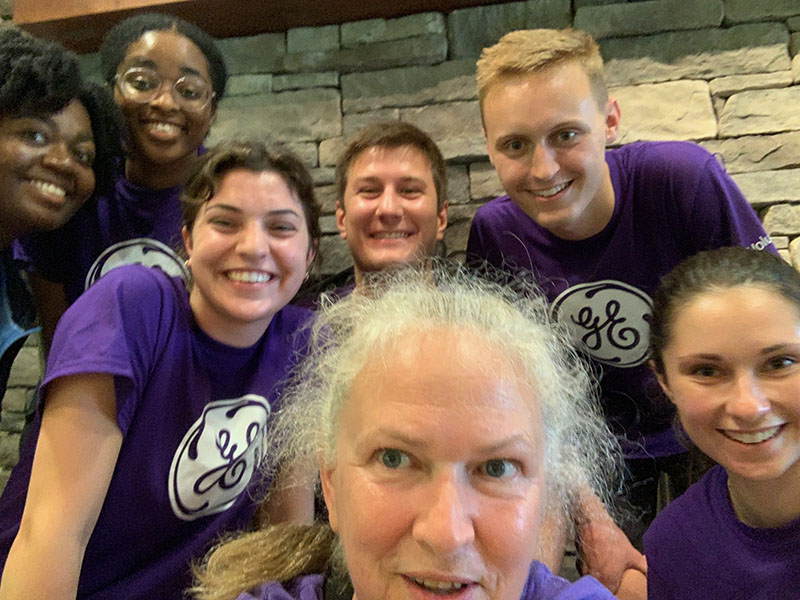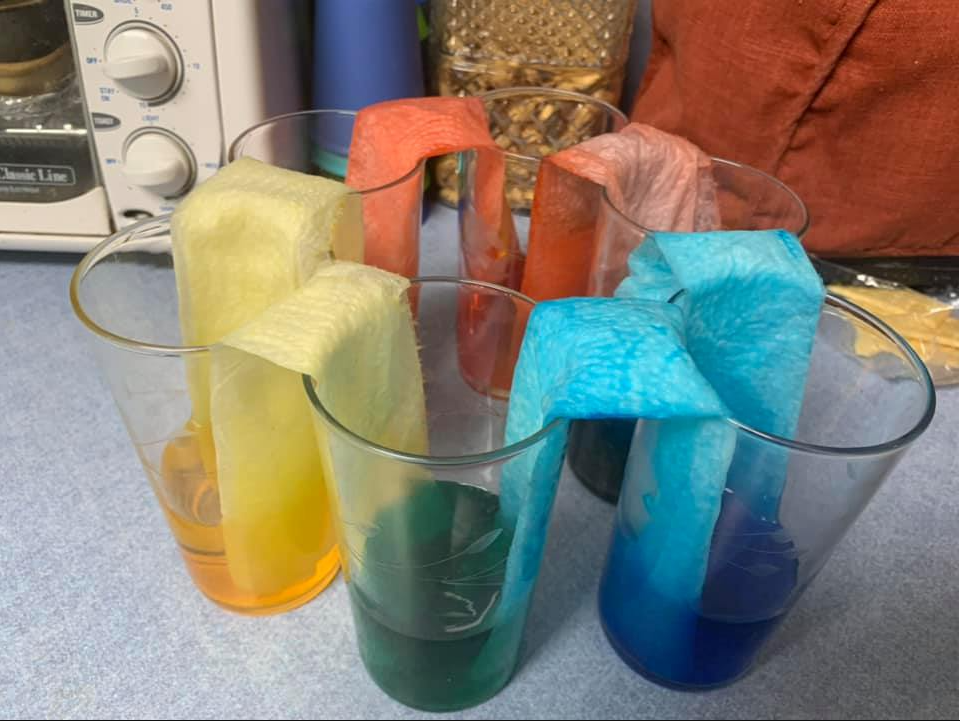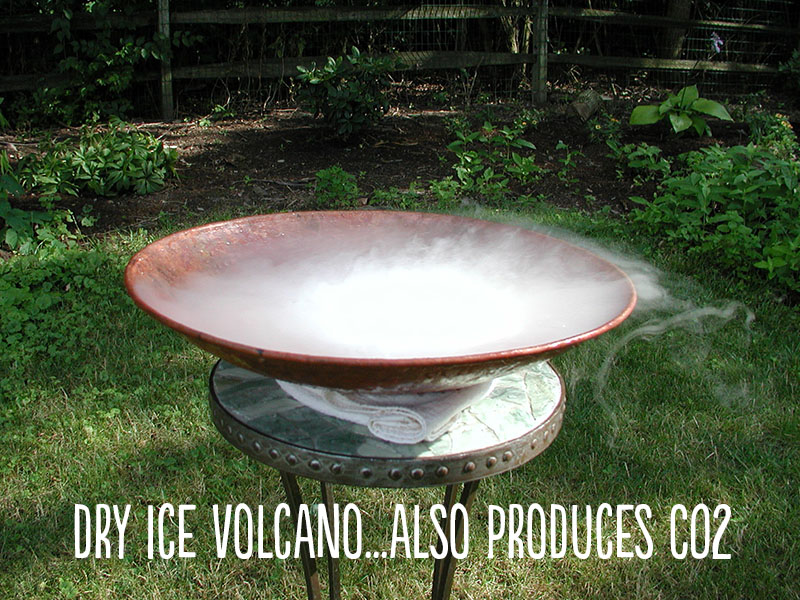2020 stem camp experiments & Schedule
Looking for some experiments your kids can do at home? Join me and other GE Volunteers as we host a virtual series, Summer of STEM Experiments, in collaboration with Girl Scouts of Western Ohio!


2020 STEM Experiments Schedule
We can’t be at Camp Butterworth with the Girl Scouts this summer, so we are bringing a virtual series of experiments into your home, with LIVE Facebook calls Fridays at 1 pm and 3 pm. The 1 pm slot is for younger girls, the 3 pm has more advanced content.
Here’s the schedule at left… download a copy below. Links provided where possible… the GSWO Summer Camp link may not work.
For the experiments I’m leading, the information below will give you a link to a dedicated webpage for that experiment, with videos, materials lists, and handouts. Or, navigate there directly-the pages appear beneath the STEM menu.
A link is provided to the Girl Scouts Summer Camp Website… you will need to join the group to be able to view the live experiment demos.
week 1 - paper airplane
Want to learn more about how airplanes fly? Join Sharon Crall, and build a paper rocket and a paper airplane.
Or join the 3 pm session, and get more details on how planes fly with some experiments to demonstrate Bernoulli’s principle.
Videos linked below, and a link to a NASA video on paper rockets linked at left.

Week 2 - walking rainbow
Want to learn about how primary colors combine to form secondary colors, and walking water? Join Brittany Potter to learn how capillary action can be used to mix colors with a paper towel!

week 3 - volcano
Want to see a cool chemical reaction that simulates a volcano? Join Brittany Potter Friday, June 26th at 1 pm or 3 pm for the volcano experiment!
- Bowl or container (this will be the volcano)
- Vinegar
- Baking soda
- Food coloring (optional)
- Liquid dish soap (optional)
- Spoon
- Dish that will house the “volcano”
***Also something underneath your volcano to protect your work surface… food coloring can stain! ****
Experiments linked below. Enjoy!
week 4 - Egg Drop
Ever wonder what happens when two objects collide? Welcome to the Great Egg Drop Challenge! Your mission, should you choose to accept it, is to design a protection system to get a fresh egg safely to the ground from a free fall of 7 feet high onto a flat, hard surface, such as concrete, tile, or laminate.
Join me, Dr. Marsha Tufft, in this fun, but simple experiment to learn about packaging… and learn a bit about potential energy, kinetic energy, conservation of momentum, and energy… plus mass, springs, and dampers–the main elements of a mechanical system.
lCheck out the dedicated experiment page with the link below! … includes the full lesson handout, materials list, and more egg drop test videos, including slow motion video clips of several drops… and a few breaks!
week 5 - build a cardboard catapult
Want to learn about a cool, simple machine that converts potential energy into kinetic energy? Join me, Marsha Tufft, to build a cardboard catapult. Then join me next week as we test them and talk about the results!
Catapults are great for learning about transfer of potential energy to kinetic energy. And they’re fun to test. But, kits can be hard to find. So, here’s your chance to channel your inner MacGyver and build one from cardboard and duct tape… and a few other things: wood paint stir stick, rubber-band, pencil, small plastic condiment cup or yogurt cup, some double-sticky adhesive, and a hook. If you use 3M Command damage-free mini hooks, you can use the adhesive tabs included.
Check out the dedicated experiment page with the link below!
week 6 - test a cardboard catapult
Okay, so you’ve built your catapult. Now it’s time to test it! (You can even combine our egg test experiment, and try launching an egg… hopefully hard-boiled in this case! Join me, Marsha Tufft, as we test our catapults and figure out how to control our range!
Take measurements. Weigh your projectiles. Do you see any trends? Learn about potential energy and kinetic energy. Can you make your projectiles go farther? How? Can you predict how far your projectile will go? Can you develop a game using your catapult?
The main experiment video is linked at left, but if you want to learn more about launch angles, or watch me shoot hard-boiled eggs, you’ll need to check out the detailed experiment page–link below!
week 7 - build and test a cardboard boat
Why do some things float and others don’t? Join me, Marsha Tufft, as we learn about a predictor for buoyancy, and how to size and build a boat out of cardboard. Want to have some fun? Build a surfboat! Or, build something smaller that you can test in your bathtub. Your creativity is the limit!
Check out the dedicated experiment page with the link below! And check out the video of my golden retriever, Harry, surfing in the ocean on one of my home-made surfboats!
This page also includes a bonus experiment on buoyancy!
week 8 - crane badge
Want to learn about cranes and how they work? Join Marnie Ham for the Crane Experiment.
Videos and handout linked below!
week 9 - butterfly flight
In week 1 of Girl Scout STEM Camp, we learned about paper rockets and paper airplanes, but how do butterflies generate lift? Join me, Marsha Tufft, as we discover the mysteries of butterfly flight, and make our own 2D ‘wind tunnel’ using milk, pudding mix, and food coloring to see the vortexes–swirls–that develop from a butterfly’s flapping flight.
Learn how you can use laminar flow theory to decorate your favorite dessert with a special design, like this pudding at left with chocolate syrup, or an iced cake or cookie!
Check out the dedicated experiment page with the link below!
